The 48th edition of Art Basel (15–18 June) continues the expansion of a humble trade fair into a self-proclaimed ‘region-wide art week’. Bringing together over 4,000 artists, represented by 291 galleries across 34 countries, Europe’s most influential commercial exhibition each year spills further out beyond the Messeplatz and into the city’s streets and cultural institutions.
The art world’s interconnectedness, specifically the instantaneous dissemination of images online, lessens the imperative for buyers to travel to contemporary art fairs to see the works on offer. Perhaps in response, the organisers have sought to emphasise the fair as a talking shop for the art world’s most influential individuals, a rare opportunity in a crowded calendar to build relationships in person. Hence the focus on a strong talks programme. This year’s ‘Conversations’ section, programmed by Mari Spirito, founding director of Protocinema (Istanbul/New York), features 27 talks and promises to build on the fair’s reputation for identifying patterns in the production and reception of new art. The series begins with the Premiere Artists Talk with Annette Messager who discusses her work with Maria Balshaw.
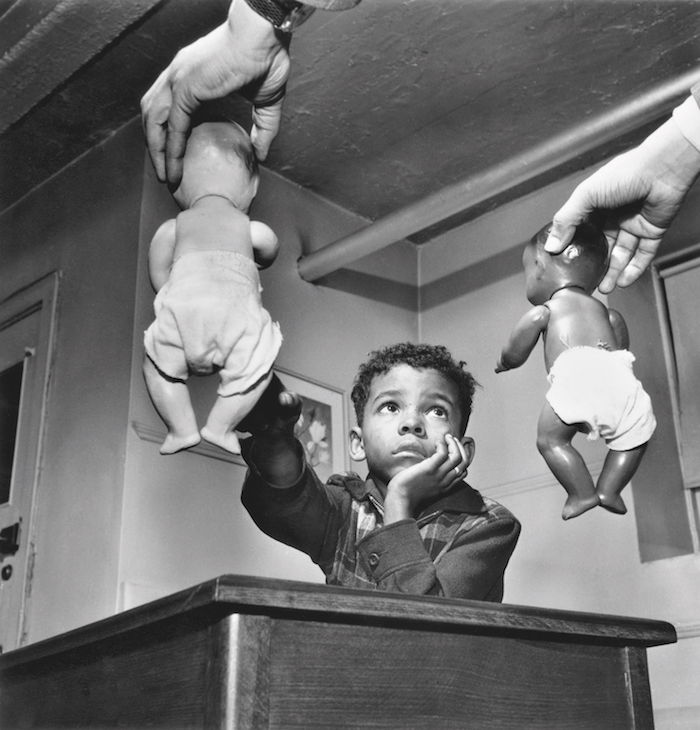
Untitled, Harlem, New York (1947), Gordon Parks. Jenkins Johnson Gallery. Courtesy and © The Gordon Parks Foundation
It remains to be seen whether the political turn in contemporary art suggested by the recent Whitney Biennial and Documenta 14 in Athens translates into the commercial context of Art Basel. In the wake of the controversy surrounding the display of Dana Schutz’s Open Casket (2016) at the Whitney, which came to focus on (among other things) the ethics of transforming documentary photography into art, New York’s Jenkins Johnson Gallery presents Gordon Parks’ photographs, including his celebrated images of the civil rights struggle. Also in the ‘Feature’ section, which is devoted to curated shows by established and historic artists, look out for the work of Nam June Paik, whose market is catching up with his exalted reputation, at James Cohan Gallery, and the experimental film-maker Stan VanDerBeek at Los Angeles’ The Box, which is one of 17 newcomers to the fair. (Others making their debut include Di Donna and Leila Heller Gallery from New York; Kalfayan Galleries, Athens; and Gypsum Gallery, Cairo.) VanDerBeek’s immersive installation Movie Mural (1965–68) revisits the artist’s earlier 1965 Movie-Drome, his elaborate communications system made from the top of a grain silo. Among the galleries presenting less established artists, Berlin’s Wentrup Gallery pairs Nevin Aladağ with the German-Romanian duo behind Peles Empire – an intriguing combination.
As the archetypal globalised art movement of the digital era, post-internet art – describing work made after the invention or at least wide adoption of the internet – has been rejected by its appointed figureheads as much as by hostile critics. That it soon became shorthand for a large body of work which dealt only superficially with certain modes of interaction did not do justice to the best of its practitioners, chief among whom was Cécile B. Evans, whose new work Sprung a Leak (2016) was recently exhibited at Tate Liverpool. Having emerged in credit from last year’s almost universally reviled Berlin Biennale, she shows here with Galerie Emanuel Layr. London’s Herald Street, which presents work by Pablo Bronstein and Jessi Reaves, among others, is another gallery hoping that Art Basel can cement the reputation of artists no longer emerging but not yet firmly established.
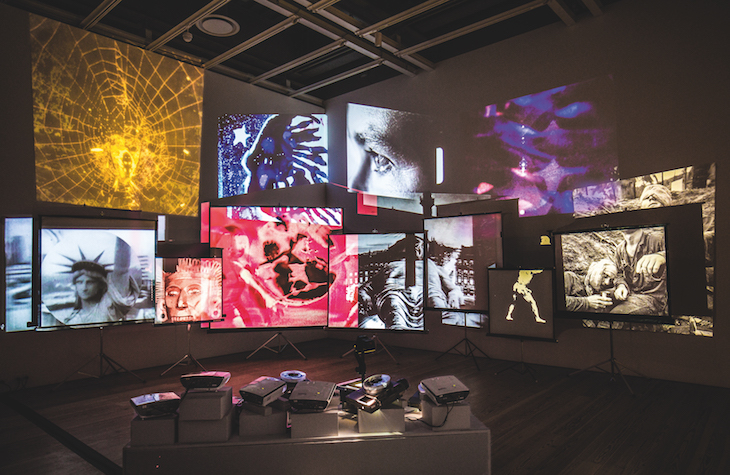
Movie Mural (1965–68), Stan VanDerBeek. Installation view at the Whitney Museum of Art, 2017. Photo: Andrew V. Uroskie
Basel remains the fair to which galleries bring their best work, conscious of the commercial opportunities it affords, the connoisseurship of its audience relative to most other fairs, and its high critical profile. In the fair’s main section, London’s highly regarded Thomas Dane presents an exhibition focusing on the female artists on its roster. Works by Lynda Benglis, Cecily Brown, Barbara Kasten, Caragh Thuring and Ella Kruglyanskaya will attract critics and collectors alike. Sadie Coles HQ, meanwhile, presents Urs Fischer’s spectacular plasticine version of Rodin’s The Kiss, a work whose fidelity to the original will gradually diminish over the course of the fair through the various touches of visitors, who are allowed irreverently to squidge and poke the sculpture. Another of the gallery’s artists, Gabriel Kuri, presents his mixed-media installation Shelter (2011) as part of the ‘Unlimited’ section.
Curated by New York-based Gianni Jetzer, the ‘Unlimited’ section accommodates ‘projects that transcend the classical art-show stand’, creating a platform for 76 large-scale works and live performances, while ‘Statements’ is devoted to solo projects by emerging artists. Kate Macgarry brings the talented young filmmaker Samson Kambalu, whose short works are based on a whimsical set of rules and play with the traditions of both European and African cinema. Indeed, moving image works are set to be a major part of Basel, as they have become a fixture of galleries’ exhibition programmes over recent years. Cairo-based Maxa Zoller – who has a keen interest in experimental film – curates a week-long dedicated film programme with a political bent, focusing on subjects including migration, racism, and terrorism. Journeys psychological and literal are a theme, notably in Eric Baudelaire’s new feature-length film, Also Known As Jihadi (2017), an account of the radicalisation of a young Frenchman and his flight to Syria to join Islamic State. He Xiangyu’s The Swim (2017), meanwhile, traces the Chinese artist’s return to his home town near the border with North Korea through a series of interviews with veterans of the Korean War and defectors from the totalitarian regime.
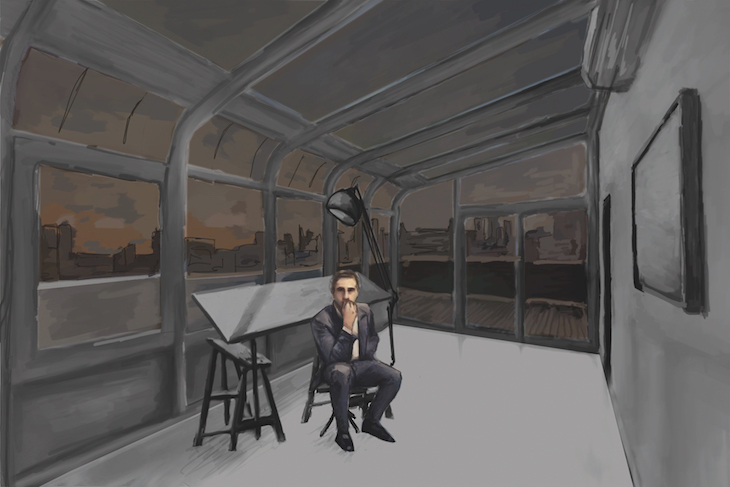
Storyboard for Amos’ World (2017), Cécile B. Evans. Galerie Emanuel Layr. Courtesy of the artist and Galerie Emanuel Layr, Vienna/Rome
Art Basel’s increasingly diverse programme is in part a reflection of the art market’s enthusiastic colonisation (and capitalisation) of other cultural fields, in particular experimental film and theatre. Such expansion also ensures that the art world’s most influential dealers and collectors continue to make the annual pilgrimage to Switzerland. ‘Parcours’, curated by Samuel Leuenberger, places sculptures, interventions, and performances in neighbourhoods around Basel’s historic old town, and serves to situate the fair more firmly in the city. By reimagining the fair as a cultural event, Art Basel follows the contemporary art world’s broader shift away from its historic focus on objects towards the production and sale of experiences.
Art Basel is at the Messeplatz from 15–18 June.
From the June issue of Apollo. Preview and subscribe here.
Unlimited access from just $16 every 3 months
Subscribe to get unlimited and exclusive access to the top art stories, interviews and exhibition reviews.

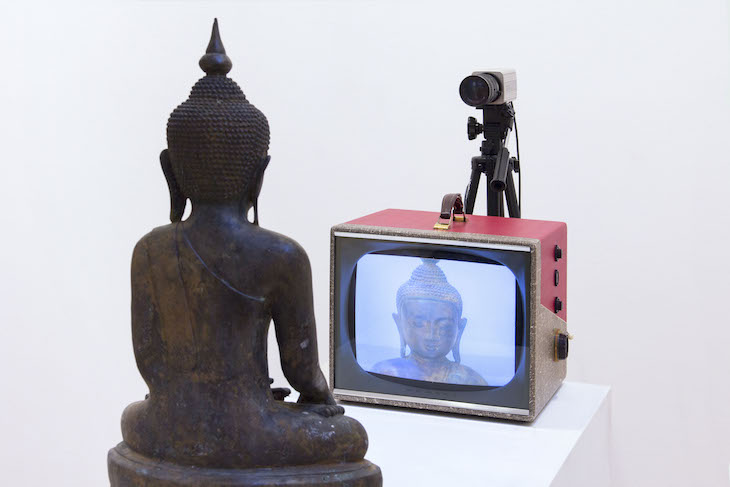
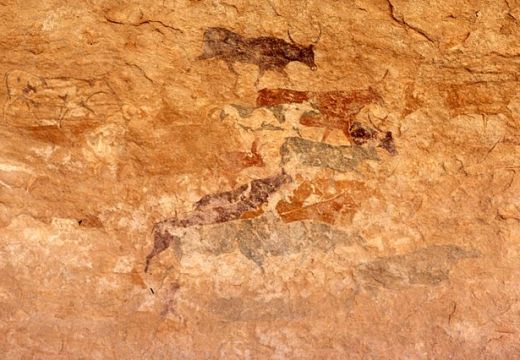
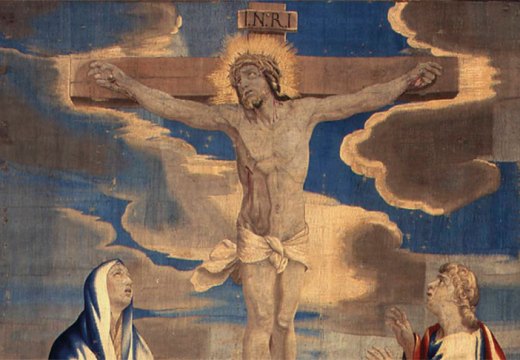










![Masterpiece [Re]discovery 2022. Photo: Ben Fisher Photography, courtesy of Masterpiece London](http://www.apollo-magazine.com/wp-content/uploads/2022/07/MPL2022_4263.jpg)
It’s time for the government of London to return to its rightful home